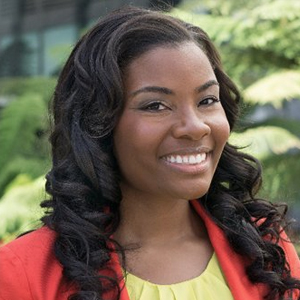Building a culture of belonging is key to keeping diverse girls in STEM pipeline
For the past two decades, advocates have focused on creating a more diverse workforce by engaging more girls and Black and brown youth in science, technology, engineering and math, or STEM, education programs. On the surface, this strategy makes sense — if more girls and Black and brown youth enter the education-to- career pipeline, the workforce in these fields should eventually mirror our diverse society.
Yet, after decades of work to improve representation in STEM careers, the results are still dismal. Black women still only hold 1.8% of STEM jobs in the United States; Latina women hold only 2.4%; and Indigenous women still only hold 0.1%. We have to stop and ask ourselves why.
The simple answer is that we are trying to solve the wrong problem. We focus too often on how many Black and brown youth can be pushed into the STEM pipeline without stopping to deeply assess the pipeline itself, which is riddled with leaks that cause young people to fall out and not persist into STEM careers.
At Techbridge Girls, a national nonprofit improving STEM education for Black and brown girls for over 20 years, we have seen this play out firsthand. Our experience working with girls in after-school programs taught us that we needed to change how we’re approaching the problem. So, we stopped focusing on the number of Black and brown girls entering these programs and started homing in on the experiences they are having along their journeys. And we started asking ourselves questions. What if we redefined what quality STEM education looks like? What if we acknowledged how standard STEM education is grounded in a white male-dominated culture that Black and brown girls will never fit into? What if we changed how we assess whether programs are successful — evaluating girls’ experiences within a program the same way we do representation data? What if tech sector executives and corporate boards held themselves as accountable for creating a culture of belonging as they are for their company’s financial health?
Asking questions like these helped us develop solutions that we believe can move the needle on diversity in STEM broadly. The solutions start with creating a sense of belonging. It doesn’t work to expect Black and brown girls to simply “fit in” and mold to existing environments that weren’t designed for them — they need to feel seen and valued.

A “sense of belonging” refers to a student’s feelings of acceptance, importance, value and comfort to be oneself in the classroom and the workplace. Research shows that Black and brown women in STEM report feeling a sense of belonging less frequently than any other demographic group — less than white men, white women, and men of color — and that the extent to which this group struggles with belonging can be overlooked when race, gender and economic status are not considered together.
Educators and school administrators can better support Black and brown girls by creating communities that allow and encourage them to feel comfortable, welcomed and supported in the classroom. The types of classroom environments that foster a sense of belonging are affirmative, adaptive and supportive of all girls — where educators are good listeners; where they are supportive of girls through the ups and downs of their STEM education journey; where they adopt and implement culturally relevant curricula; and where they provide programs that are accessible, affordable and within girls’ own communities.
If STEM advocates and educators can craft environments that center belonging — the changes can set Black and brown girls up for success and break the cycles of poverty that have a grip on too many of our girls’ communities. Demand for STEM jobs is projected to grow 11% from 2020 to 2030, and 40% of all employment revolves around innovation industries including clean energy, information technology, defense, and advanced manufacturing. These are rewarding, high-paying careers that can change the trajectory of girls’ lives, while also tackling the most pressing challenges of our time.
The STEM field also desperately needs Black and brown girls to bring their creativity, innovation and diverse perspectives to the solutions that impact us all — making the technology we use, the health care we receive and the infrastructure we depend on better and more equitable. That’s especially true with Black, Indigenous, and Latina girls. Whether it’s climate change or income inequality, it’s clear that Black, Indigenous, and Latino communities — particularly women — face the brunt of the impact. If the STEM field leaves 50% of the population out of solutions, then we will never reach our greatest potential and realize our global leadership as a nation.
We have a long way to go to ensure that STEM education programs are meeting girls’ needs so they can thrive and persist into STEM careers, but we are starting to crack the code of what they need to get there. The rest of the STEM ecosystem needs to catch up.
This article originally appeared in EdSource.Enjoy reading ASBMB Today?
Become a member to receive the print edition four times a year and the digital edition monthly.
Learn moreFeatured jobs
from the ASBMB career center
Get the latest from ASBMB Today
Enter your email address, and we’ll send you a weekly email with recent articles, interviews and more.
Latest in Opinions
Opinions highlights or most popular articles

Debugging my code and teaching with ChatGPT
AI tools like ChatGPT have changed the way an assistant professor teaches and does research. But, he asserts that real growth still comes from struggle, and educators must help students use AI wisely — as scaffolds, not shortcuts.

AI in the lab: The power of smarter questions
An assistant professor discusses AI's evolution from a buzzword to a trusted research partner. It helps streamline reviews, troubleshoot code, save time and spark ideas, but its success relies on combining AI with expertise and critical thinking.

How AlphaFold transformed my classroom into a research lab
A high school science teacher reflects on how AI-integrated technologies help her students ponder realistic research questions with hands-on learning.

Writing with AI turns chaos into clarity
Associate professor shares how generative AI, used as a creative whiteboard, helps scientists refine ideas, structure complexity and sharpen clarity — transforming the messy process of discovery into compelling science writing.

Teaching AI to listen
A computational medicine graduate student reflects on building natural language processing tools that extract meaning from messy clinical notes — transforming how we identify genetic risk while redefining what it means to listen in science.

What’s in a diagnosis?
When Jessica Foglio’s son Ben was first diagnosed with cerebral palsy, the label didn’t feel right. Whole exome sequencing revealed a rare disorder called Salla disease. Now Jessica is building community and driving research for answers.

